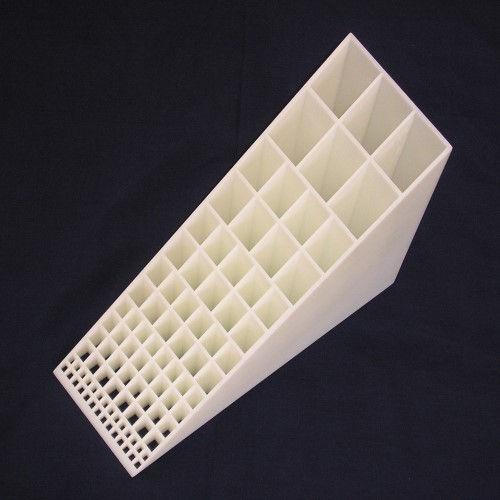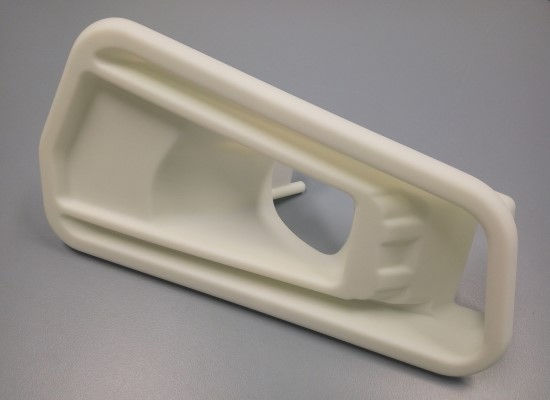Snapshot of SLA (Stereolithography)
What is SLA (Stereolithography)
SLA also known as Stereolithography, provides the greatest accuracy with an excellent surface finish. The process works by curing liquid photopolymers when exposed to ultraviolet light. SLA is limited in its range of applicable materials but still widely used for conceptual designs, Product verification, Pattern making, Form/Fit analysis and light functional testing.
Advantages of SLA Process
- Very Accurate process, suitable for close tolerance and form fit parts
- Excellent surface finish, suitable for conceptual and presentation designs
- Excellent feature detail, suitable for making master models for vacuum casting process
- Translucent or Transparent parts can be made by using special resins and finishing techniques.
- SLA parts can be bead blasted, painted, textured finished, electroplated.
- SLA Quick cast parts can be directly used for Investment casting patterns.
Applications of SLA parts
- Medical and Healthcare sector
- Wind-Tunnel Test Models, Investment Casting Patterns
- Electronics and Electrical housings
- Automotive, Aerospace and Engineering components
- Excellent feature detail, suitable for making master models for vacuum casting process
- Tooling inserts, Jigs and Fixtures
- Packaging goods, Consumer products, Jewellery
Finishing examples of SLA prototypes
Available Finishes
- Machine Finish
- Polished Finish
- Painted Finish
- Metallising
SLA ABS material Specs
| Property | Data |
|---|---|
Density
|
1.10 g/cm3 |
Water Absorption
|
0.24 % |
Tensile Strength (Mpa)
|
45 Mpa |
Tensile Modulus (GPa)
|
2.40 GPa |
Flexural Strength (MPa)
|
68 Mpa |
Glass Transition Temp - Tg (℃)
|
44℃ |
Heat Deflection Temp - 1.8MPa (℃)
|
48℃ |
Hardness (Shore D)
|
80 |
Note: This Data is indicative only
|
|
How SLA works:
When the laser beam hits the liquid, it solidifies the resin.
When a layer is fully traced, the elevator is then lowered in the vat. The self-adhesive property
of the material causes the layer to stick with each other and in this way a 3d part is formed in multi-layers.
SLA process is very accurate and suitable for smooth surface finished parts. These parts are widely used for conceptual
designs, Product verification, Pattern making, Form/Fit analysis and light functional testing.


Limitations of SLA Process
- Parts are fragile need to be careful before using for thin wall sections and only recommended for light functional testing. Generally not recommended for snap fitting or living hinge features.
- Most of the SLA parts are sensitive to heat, moisture and chemicals. Not recommended for high humidity or excessive temperature applications.
- SLA may not be the cheapest option for prototyping needs, some factors determining the price are: Volume, overall size specially height, complexity, surface finish and post-processing requirement.




